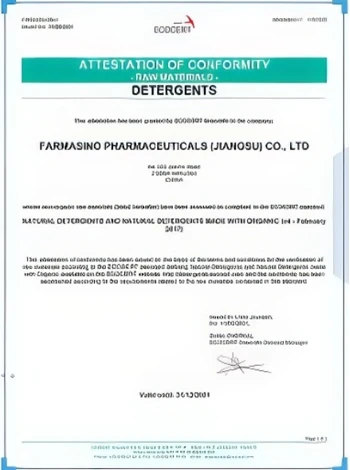



types of water treatment chemicals
Types of Water Treatment Chemicals
Water is a vital resource that supports human life, agriculture, and industry. To ensure its purity and safety for consumption, a variety of chemicals are used in water treatment processes. These chemicals play crucial roles in disinfection, coagulation, flocculation, sedimentation, and many other processes. In this article, we will explore the different types of water treatment chemicals, their purposes, and their applications.
1. Disinfectants
One of the primary purposes of water treatment chemicals is to disinfect water and eliminate harmful pathogens. Common disinfectants include
- Chlorine One of the most widely used disinfectants, chlorine kills bacteria, viruses, and other microorganisms. It is often introduced into water systems as sodium hypochlorite or calcium hypochlorite, and provides a residual effect that helps maintain water quality.
- Chloramine Formed by combining chlorine with ammonia, chloramine is a less aggressive disinfectant than chlorine. It is often used in systems where chlorine can react with organic matter to form harmful by-products.
- Ozone Ozone is a powerful oxidant that can inactivate bacteria and viruses effectively. It degrades quickly and does not leave any harmful residuals, making it an attractive option for water treatment.
- Ultraviolet (UV) Light Although not a chemical in the traditional sense, UV light is a powerful disinfectant that eliminates microorganisms by damaging their DNA. It is a chemical-free method of disinfection, making it environmentally friendly.
2. Coagulants and Flocculants
Coagulation and flocculation are processes used to remove suspended solids from water
. Chemicals employed in these processes include- Alum (Aluminum sulfate) This is the most common coagulant used in water treatment facilities. It works by neutralizing the charge of suspended particles, enabling them to clump together and form larger particles (flocs) that can be removed more easily.
- Ferric Chloride Another effective coagulant, ferric chloride is especially beneficial in treating water with high organic content. It enhances the removal of turbidity and assists in the formation of larger floc particles.
types of water treatment chemicals

- Polymeric Flocculants These synthetic chemicals improve the efficiency of the coagulation process by promoting the growth of larger flocs. They are used when treating water with low turbidity levels and can achieve higher removal rates compared to traditional coagulants.
3. pH Adjusters
Maintaining the appropriate pH level in water is essential for effective disinfection and coagulation. Common pH adjusters include
- Lime (Calcium hydroxide) Lime is often used to raise the pH of acidic waters, helping to prevent corrosion in distribution systems and aiding in the removal of heavy metals.
- Sodium Bisulfite This chemical is used to decrease pH levels. It is particularly effective in neutralizing chloramines and helps in controlling the scaling of pipes.
4. Corrosion Inhibitors
Corrosion can lead to significant financial and operational issues in water distribution systems. Corrosion inhibitors protect pipes and infrastructure, thus prolonging their lifespan. Common inhibitors include
- Orthophosphates These compounds form a protective film on the interior surfaces of pipes, preventing the leaching of metals like lead and copper into the water supply.
- Silicates Used to enhance the formation of passive films on metal surfaces, silicates provide effective protection against corrosion.
Conclusion
Water treatment chemicals are indispensable tools in ensuring safe and clean water for both consumption and environmental protection. Disinfectants eliminate harmful pathogens, while coagulants and flocculants remove suspended solids. pH adjusters maintain optimal water conditions, and corrosion inhibitors protect the integrity of distribution systems. As water quality regulations become more stringent, the advancement and application of these chemicals continue to evolve, ensuring that future generations have access to safe drinking water.
-
Why Sodium Persulfate Is Everywhere NowNewsJul.07,2025
-
Why Polyacrylamide Is in High DemandNewsJul.07,2025
-
Understanding Paint Chemicals and Their ApplicationsNewsJul.07,2025
-
Smart Use Of Mining ChemicalsNewsJul.07,2025
-
Practical Uses of Potassium MonopersulfateNewsJul.07,2025
-
Agrochemicals In Real FarmingNewsJul.07,2025
-
Sodium Chlorite Hot UsesNewsJul.01,2025










